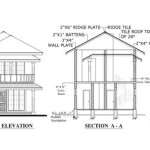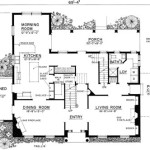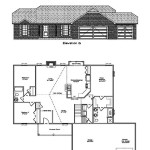How to Choose a House Plan
When it comes to building a new home, choosing the right house plan is one of the most important decisions you'll make. The plan you choose will determine the layout, style, and size of your home, so it's important to take your time and consider all of your options.
Here are a few things to keep in mind when choosing a house plan:
- Your lifestyle. What are your needs and wants in a home? How many bedrooms and bathrooms do you need? Do you need a home office? A family room? A formal dining room?
- Your budget. How much can you afford to spend on a new home? Keep in mind that the cost of building a home will vary depending on the size, style, and complexity of the plan you choose.
- Your lot. What are the dimensions and topography of your lot? The size and shape of your lot will limit the types of house plans you can choose.
- Your climate. The climate in your area will affect the design of your home. For example, if you live in a cold climate, you'll need a home with good insulation and a heating system that can keep you warm during the winter months.
- Your personal style. What style of home do you like? Traditional? Contemporary? Craftsman? Ranch? There are many different styles of house plans to choose from, so you're sure to find one that fits your taste.
Once you've considered all of these factors, you can start narrowing down your choices. Here are a few tips for finding the perfect house plan:
- Look at online resources. There are many websites that offer a wide variety of house plans to choose from. You can filter your search by style, size, number of bedrooms and bathrooms, and other criteria.
- Visit model homes. Many home builders have model homes that you can tour to get an idea of what their plans look like in person. This is a great way to get a feel for the layout and flow of a home.
- Talk to a home designer. A home designer can help you create a custom house plan that meets your specific needs and wants. This is a great option if you have a unique lot or if you want a home that's truly one-of-a-kind.
Choosing a house plan is a big decision, but it's also an exciting one. By taking the time to consider all of your options, you can find the perfect plan for your new home.

How To Choose A House Plan Cheyenne S From The Hartland

How To Choose A House Plan Everything Know

How To Choose A House Plan Cheyenne S From The Hartland

How To Choose A Floor Plan For New House Of Watkins

How To Choose A House Plan Cheyenne S From The Hartland

How To Choose A House Plan When Building New Home Msc Enterprises Llc

How To Choose The Perfect Floor Plan For Your New Home G J Gardner Homes

How To Choose A Floor Plan Capstone Homes

15 Helpful Tips To Choose A Floor Plan For New House Abbotts At Home

15 Helpful Tips To Choose A Floor Plan For New House Abbotts At Home








